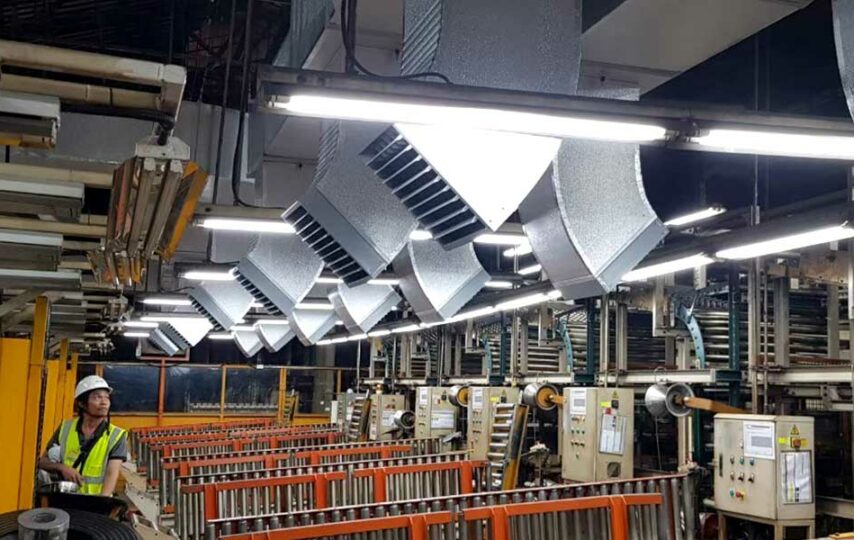In this exploration of “Hydraulic Wonders; Innovations Revolutionizing Industrial Applications ” we delve into the workings of hydraulic systems trace their evolutionary path and highlight groundbreaking products.We further examine the impact of these advancements, across various industries and envision the future prospects of hydraulic technologies.
This analysis provides an understanding of the role played by hydraulic systems in shaping industrial applications.
Understanding Hydraulic Systems
Hydraulic systems, which form a part of industry operate based on fluid power principles to generate, control and transmit power. The core foundation of these systems is rooted in principles, including Pascals law. According to Pascals law pressure applied at any point within a confined fluid is transmitted without loss throughout the system.
Consequently these systems can effectively amplify force making them indispensable in heavy machinery applications. Maintenance plays a role in ensuring efficiency and longevity. Regularly inspecting components for signs of wear and tear monitoring quality and keeping the system free, from contaminants are aspects of maintenance.
Additionally comprehending the systems operating cycle identifying potential failure points of time and proactively replacing components are also steps to prevent costly downtime.
To fully utilize systems it is essential to have an understanding of the underlying hydraulic principles and ensure regular maintenance of the system.
The Progression of Hydraulic Technology
Expanding upon the principles and maintenance practices the field of hydraulics products and technology has experienced notable advancements throughout the years. The timeline of progress reveals a path of innovation starting from basic applications, in ancient civilizations to the intricate high performance systems in use today.
However it is important to acknowledge the challenges faced by technology that have played a role in shaping its evolution. These challenges include addressing issues related to heat and pressure control striving for increased efficiency and ensuring system reliability across environments.
The ongoing development of technology and materials along with the introduction of controls and implementation of maintenance strategies highlight the constant evolution within hydraulic technology. Each advancement represents a step in harnessing hydraulic power for a wide range of industrial applications.
Pioneering Breakthroughs in Hydraulic Engineering
When exploring pioneering breakthroughs in engineering it becomes clear that solutions developed to overcome challenges have given rise, to a new generation of hydraulic systems that are revolutionizing industrial applications.
One notable example is the advancements made in hydraulics for space exploration. This entails utilizing pressure lightweight systems that enable precise motion control even within harsh extraterrestrial environments.
Hydraulic engineering has a role to play in energy especially when it comes to wind turbines. In this context hydraulic pitch control systems are vital, for adjusting the blade orientation, which ultimately improves energy generation while minimizing strain. These advancements highlight the adaptability and potential of technology, during this era of industrial revolution and sustainability.
Impact of Hydraulic Innovations on Industries
The incorporation of groundbreaking innovations has brought about effects, in many modern industries. These advancements have reshaped operations. Greatly enhanced efficiency. One critical aspect that has significantly improved is Hydraulic Efficiency, which plays a role in maintaining an edge.
Various key sectors, such as manufacturing, mining and agriculture have experienced reductions in energy consumption and operational costs thanks to these hydraulic systems. Additionally there has been an impact on Industrial Sustainability. The development of solutions through hydraulic innovations has led to minimized waste and reduced carbon footprints within industries.
As a result the impact of these innovations extends across financial and environmental aspects. They have become an element in industrial applications.
Future Prospects of Hydraulic Technologies
Looking ahead to the prospects of technologies we are met with exciting possibilities, for industrial applications. The focus is now shifting towards Hydraulic Sustainability and Green Hydraulics—combining eco friendliness with efficiency. The next generation of hydraulics aims to be energy optimized to minimize impact while maximizing output.
The future of technologies is filled with possibilities. We can expect innovations that will result in high performance systems minimizing leakage reducing noise levels and improving heat management. Additionally there’s a development, on the horizon; hydraulic systems utilizing fluids, which is a significant step towards environmentally friendly hydraulics.
Moreover the integration of digitalization and IoT will enhance efficiency enable maintenance and extend the lifespan of these systems. It’s clear that the potential for technologies goes beyond their current applications, in industries.
FAQs
What kind of difficulties are typically encountered when it comes to maintaining systems?
Keeping systems in condition often involves addressing issues like managing system contamination preventing leaks and ensuring the systems longevity. These challenges require monitoring and the implementation of solutions for efficient and durable hydraulic advancements.
How Are Hydraulic Technologies Adapted for Use in Climates or Environments?
Adapting technologies to suit diverse climates requires significant engineering breakthroughs. Achieving climate resilience involves modifying system components and fluids to withstand temperature extremes, humidity levels and other environmental conditions.
Are there any effects linked to the utilization of hydraulic technologies?
Indeed hydraulic technologies can have impacts. While they offer efficiency that reduces energy consumption it is important to handle fluids properly to avoid harming ecosystems through improper disposal. Therefore prioritizing hydraulics becomes crucial in mitigating any effects on the environment.
Can Hydraulic Technologies Be Integrated With Other Systems Like Electrical or Mechanical?
Absolutely! Hydraulic technologies can be seamlessly integrated with mechanical systems. By leveraging applications, like advancements it becomes possible to enhance efficiency and functionality across a wide range of industrial settings.
What are the necessary safety precautions and measures that should be taken when working with systems?
To ensure safety while working with systems it is important to undergo thorough training, on their operation. Regular inspections of the system should be conducted to identify any issues. Additionally using equipment is crucial to minimize any risks. Following shutdown protocols and maintaining the system effectively can help prevent leaks and mechanical failures.








